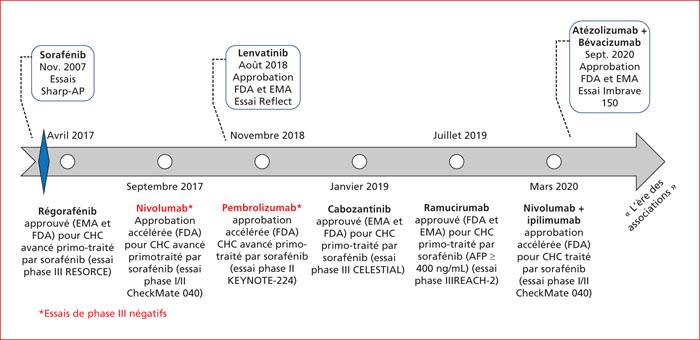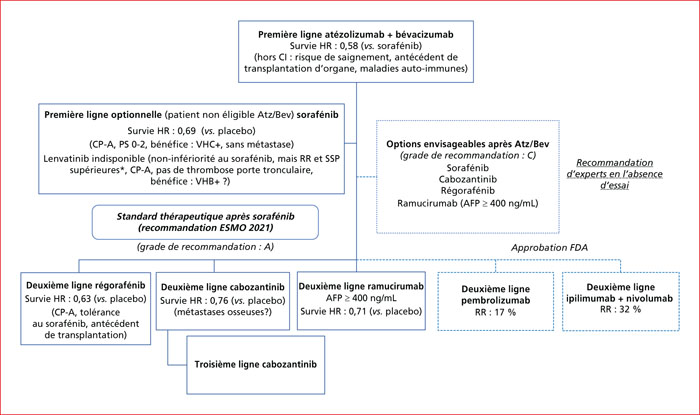Hépato-Gastro & Oncologie Digestive
MENUTherapeutic sequencing of second line systemic treatments for hepatocellular carcinoma – Real-life Data Volume 28, supplement 6, December 2021
- Key words: hepatocellular carcinoma, cabozantinib, regorafenib, nivolumab, ipilimumab
- DOI : 10.1684/hpg.2021.2236
- Page(s) : 15-25
- Published in: 2021
Moving to a second-line systemic treatment concerns most of advanced hepatocellular carcinoma (HCC) patients, especially after first-line treatment with sorafenib. Symptomatic disease progression and liver failure are key factors reducing this process, especially since the approved second-line agents belong to the same therapeutic class (multi-targeted tyrosine kinase inhibitors (TKIs)). Additional challenges include the current lack of predictive biomarkers and the safety profile of TKIs. However, the therapeutic landscape of advanced HCC is undergoing significant shift driven by immunotherapies targeting immune checkpoints and their ligands. Similarly to other malignancies, the success of combination therapies with anti-PDL1 + anti-VEGFA in first line and anti-CTLA-4 + anti-PD1 in second line, targeting the microenvironment and enhancing anti-tumor immunity, has emerged over the last 18 months. These combinations allow response rates greater than 30 % and prolonged survival, especially in populations with hepatitis B or C viral infections. Numerous combinations are being investigated, including with TKIs for their immunomodulatory and antiangiogenic properties. These significant advances should not conceal the singular nature of HCC, closely linked to cirrhosis, the lack of data for a great number of patients due to the strict selection criteria of trials and ongoing frequent failures.



